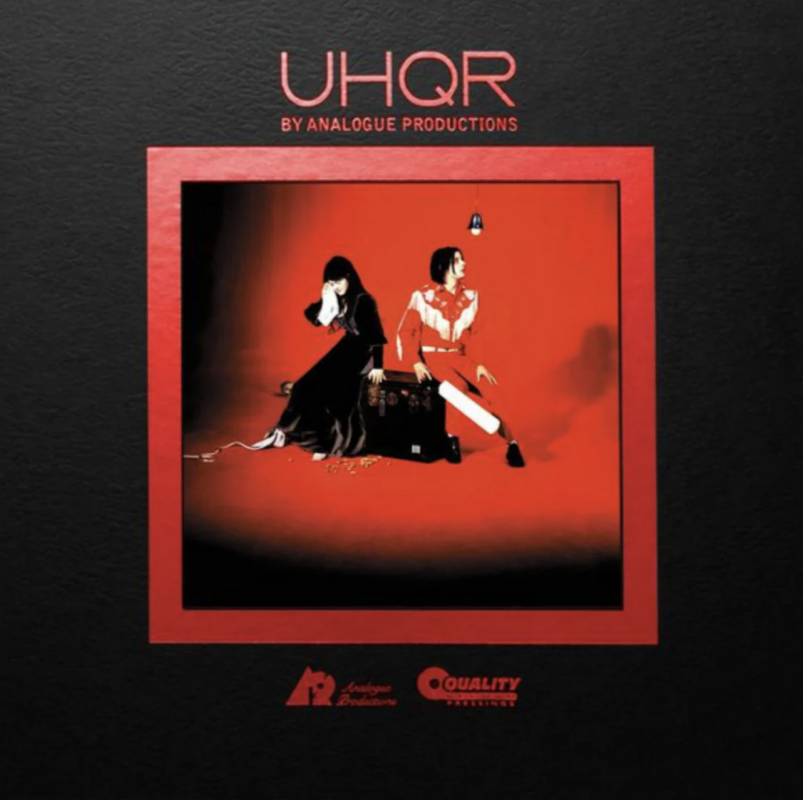
Little did Cécile McLorin Salvant know when she was studying French law in Paris while also taking classical piano classes on the side that she would end up winning the 2010 Thelonious Monk International Vocal Competition, sign a contract with the Detroit-based Mack Avenue Records label, subsequently win three consecutive Grammy Awards for Best Jazz Vocalist, AND be awarded a MacArthur Fellowship (commonly but unofficially known as the “Genius Grant”) in 2020 and 2021.
The daughter of a Haitian father and French mother, she and her older sister only spoke French in the house with their parents while growing up in Miami, and though she remembers her mother playing records by Dinah Washington and Nancy Wilson around the house, she herself wasn’t deeply connected in her formative years to the jazz tradition, with the exception of Sarah Vaughan’s divine voice, which she found captivating, even as a child.
Salvant won her Grammies for 2015’s For One to Love, 2017’s Dreams and Daggers, and 2018’s intimate duet project with pianist Sullivan Fortner, The Window (she was also nominated for 2013’s WomanChild, her U.S. debut). Each of those Mack Avenue outings showcased the Brooklyn-based singer’s glorious range and her adeptness at interpreting old blues numbers (Bessie Smith’s “You Got to Give Me Some,” Ida Cox’s “Wild Women Don’t Have the Blues”), jazz standards (“What a Little Moonlight Can Do,” “Devil May Care,” “By Myself,” “I’ve Got Your Number”) and show tunes (Rodgers & Hart’s “I Didn’t Know What Time It Was,” Leonard Bernstein’s “Something’s Coming,” “The Trolley Song” from the 1944 Judy Garland film Meet Me in St. Louis) along with the occasional pop vehicle (Burt Bacharach’s “Wives and Lovers,” Stevie Wonder’s “Visions”) and French chansons (“Le Front Caché sur Tes Genoux,” “Le Mal de Vivre,” “J’ai l’Cafard”). Her own affecting originals like “Red Instead,” “And Yet,” “The Worm,” and “Look at Me” were always sprinkled into the mix like so much sonic lagniappe.
Rather than repeating that successful formula from past outings, Salvant decided to change things up considerably for her latest recording. Jumping to the adventurous Nonesuch label, which has a longstanding track record of harboring such musical renegades/geniuses as Philip Glass, Terry Riley, Steve Reich, John Adams, Brian Eno, Laurie Anderson, and many others, Salvant felt liberated enough to tackle something completely different. The resulting album, Ghost Song, not only represents her most daring and diverse mix to date but also stands as her most personal statement. A song cycle devoted to ghosting and the many ways people can be haunted, it is unlike anything she has done before. And as she said, “It’s getting closer to reflecting my personality as an eclectic curator,” adding, “I’m embracing my weirdness.”
Bookended by two haunting pieces of Irish sean-nós, a traditional unaccompanied vocal style, which she sang in a cavernous, echoey St. Malachy’s church in Brooklyn, Ghost Song runs the stylistic gamut from the esoteric pop of Kate Bush’s “Wuthering Heights” (from the British art-rock star’s 1978 debut album, The Kick Inside) to a duet with Fortner on Sting’s waltz ballad “Until” (from the 2001 film Kate & Leopold) to a faithful take on “The World Is Mean” from the 1928 Bertolt Brecht/Kurt Weill musical The Threepenny Opera. There’s even a brief snippet from The Wizard of Oz entitled “Optimistic Voices”:
You’re out of the woods
You’re out of the dark
You’re out of the night
Step into the sun
Step into the light
Eclectic curator indeed.
Regarding the location for recording the two a cappella numbers that open and close Ghost Song, Salvant said, “We chose the church only because we had to be there anyway to record ‘I Lost My Mind,’ for the pipe organ on that track. And it seemed too rich a space not to sing a cappella there. Only hearing the recordings afterwards did it become clear how recording in that space creates a sensation of wind and air, which was perfect for those two songs.”
The acclaimed singer, who began taking piano lessons at age five and later studied at prestigious Darius Milhaud Conservatory in France, where she did her initial deep dive into jazz, also flexes her stride piano muscles on the solo instrumental “Trail Mix.” As she explained, “I was encouraged by one of my favorite pianists, Sullivan Fortner. He told me to record it!”
Cécile’s own richly literate originals, including the Dorothy Parker-meets-Sondheim-esque “Obligation,” the entrancing “I Lost My Mind” (which has her singing through a robot-sounding vocoder), the beguiling, romantic ballad “Moon Song” (which has her channeling her inner Betty Carter), and the album’s appealing R&B flavored single, “Thunderclouds,” further underscore the sheer uniqueness of the rhapsodic, 46-minute Ghost Song, which conveniently fits very nicely on two sides of vinyl.
“In some ways there are new explorations, there are many different bands on the album, and it’s recorded in many different places over a long period of time,” she said of her sixth album under her name. “I approached this album like a little sculpture, like an object I was making, rather than a document of a band.
“But in many ways, in deeper ways, it’s a continuation and development of things I’ve been working on for years, since the beginning. Like trying to blur the lines between interpretation and composition, like playing with sonic textures and bringing together songs from different eras, countries, and genres. Like how in all my albums, yearning, desire, and madness are at the center of it.
“Perhaps some of these ideas and concepts I’ve been working on are more salient in this album, but many of them have been there for years.”
Salvant added that the stirring title track, “Ghost Song,” was the starting point for making her new album. “I knew that song would be on it, and I had time with no concerts during pandemic, so I started to build around it. The album is a circle that loops around and around, with no beginning and no end. To me ghosts are stories, memories, secrets. They appear in the empty space, they are incarnations compensating for absence. I wanted to find another way of exploring this type of compensation.”
And while the intensely intimate, blues-tinged “Ghost Song” with its haunting refrain (“I’ll dance with the ghost of our love/I will carry the ghost of our long lost love”) may not have been her direct response to COVID lockdown, Cécile acknowledged, “I think lockdown helped birth this song that I was probably gestating for decades.”
“Dead Poplar” sets to music the contents of a deeply yearning letter in the public domain from photographer Alfred Stieglitz to his muse and paramour, painter Georgia O’Keefe (from 1915 until 1946, some 5,000 letters were exchanged between two major 20th-century artists). This evocative tune also speaks of Salvant’s connection to the visual art world. “My appreciation for visual art has always been there, from a young age watching my sister and mom paint and draw at home.”
Salvant not only did the cover illustration for her own 2018 album The Window and for tenor saxophonist Melissa Aldana’s 2022 Blue Note debut, 12 Stars, she also recently had a solo exhibition of her fanciful cotton thread on linen art pieces at Brooklyn’s Picture Room. “Drawing with needle and thread is a balm for my soul,” she said. That exhibition, aptly titled Ghost Song, opened on March 4 to coincide with the release of her latest Nonesuch album.
By Bill Milkowski
More articles from this editorRead Next From Music
See all
Never Mind Pro Tools, Here’s the White Stripes
- Apr 26, 2024

Oneohtrix Point Never: Again
- Apr 26, 2024

Music for 18 Musicians
- Apr 23, 2024

Schumann: Piano Quartet & Quintet
- Apr 16, 2024


















